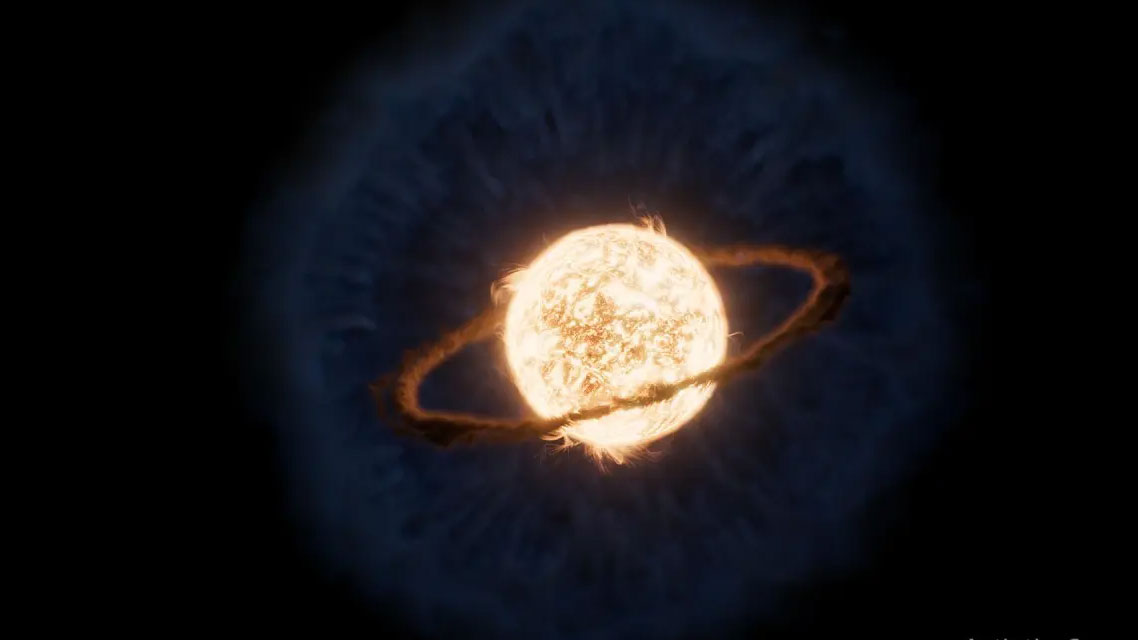Scientists are observing an extremely rare phenomenon of a planet being swallowed by a star.
Of all the different ways a planet can end its life, this one is perhaps the most dramatic: a planet moves closer and closer to its host star, heating up as it spirals inward, until it passes the point of no return and is swallowed by the star in a fiery explosion. That's exactly what happened in the event called ZTF SLRN-2020, and now the world's most expensive space telescope, the James Webb Space Telescope (JWST), is closely observing to learn more about this rare phenomenon.
An unexpected discovery
'Because this is an unprecedented event, we don't know exactly what we'll see when we point Webb at it,' said Dr Ryan Lau, lead researcher at NOIRLab. ' Thanks to our high-resolution infrared observations, we're gaining valuable insights into the ultimate fate of planetary systems – perhaps including our own solar system .'
Initially, astronomers thought the planet was destroyed when the star swelled and swallowed it. But new data from JWST suggests a different scenario: the planet spiraled inward until it was absorbed by the star.

The terrifying "melting" process
" The planet initially just touches the star's atmosphere, but then its descent becomes uncontrolled. As it is sucked in, it gradually 'erodes' and spreads out around the star ," explains researcher Morgan MacLeod from the Harvard-Smithsonian Center for Astrophysics.
As the planet eventually sinks into the star's core, it ejects layers of gas from the star's outer atmosphere. These gases gradually cool and form a cold dust cloud that surrounds the star. Within this dust cloud, scientists have also discovered a smaller disk of gas containing carbon monoxide (CO) near the star.
The event is extremely rare, but the team hopes to observe more in the future thanks to JWST and upcoming state-of-the-art observatories like NASA's Vera C. Rubin Observatory and Nancy Grace Roman Space Telescope.
You should read it
- Admire the magical beauty of the Rho Ophiuchi star system through the eyes of the James Webb . telescope
- Admire the beautiful 'penguin' against the backdrop of space through the eyes of the James Webb telescope
- Admire the colorful moment of a star in the making
- This exoplanet is half day and is nearly 800 degrees Celsius hot
- Admire the majestic spectacle of swirls of dust and gas in nearby galaxies
- Ancient 'spider web galaxy' cluster discovered, 10 billion years old
 America discovered the first Milky Way of the universe?
America discovered the first Milky Way of the universe? Historic Moment: First Photo of Earth Taken from the Moon
Historic Moment: First Photo of Earth Taken from the Moon 22 unexplained radio signals caught from 'stellar graveyard'
22 unexplained radio signals caught from 'stellar graveyard' Mysterious Ring of Light Swallows a Galaxy
Mysterious Ring of Light Swallows a Galaxy Russia develops technology to help send humans to Mars in just 1 month
Russia develops technology to help send humans to Mars in just 1 month Entrance to the world of alien life revealed in Ariel?
Entrance to the world of alien life revealed in Ariel?